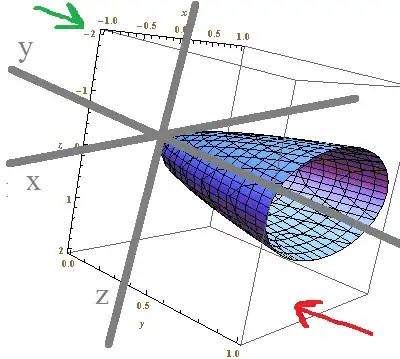$1.$ The unit disk is projected onto the xz-plane, so shouldn’t $x = 1\cos \theta$ and $\color{red}{z = 1 \sin \theta} $?
User Semsem below kindly identified the problem: The normal to the disk is on the direction $-j$ so we have to reverse the orientation as follows.
$2.$ Would someone please explain why the orientation must be reversed? By "reverse", does Semsem mean the following, that thee $xz$-plane should be viewed in the direction of the green arrow (instead in that of the red arrow, which was my problem)?


